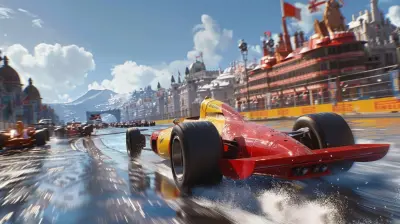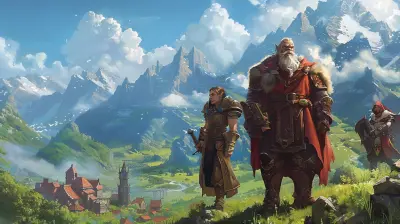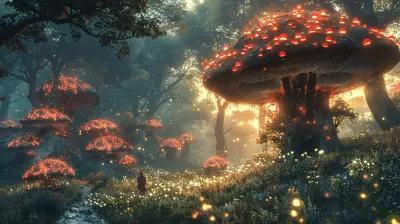Adding Character to Your Arsenal: The Importance of Weapon Visuals
7 July 2025
Let’s be real for a second—how many times have you chosen a weapon in a game simply because it looks cool? We’ve all been there. Whether it’s a sleek katana shimmering in the moonlight or a massive battle axe dripping with fiery energy, weapon visuals are a huge part of what draws us in as gamers. Sure, stats and performance are important, but visuals? That’s where the magic happens.
Weapon design is more than just eye candy; it shapes your connection to the game, enhances immersion, and can even affect playstyle. Let’s dive deeper into why weapon visuals matter so much and what makes them such a crucial part of gaming. By the end, you might just see those dazzling in-game armaments in an entirely new light.
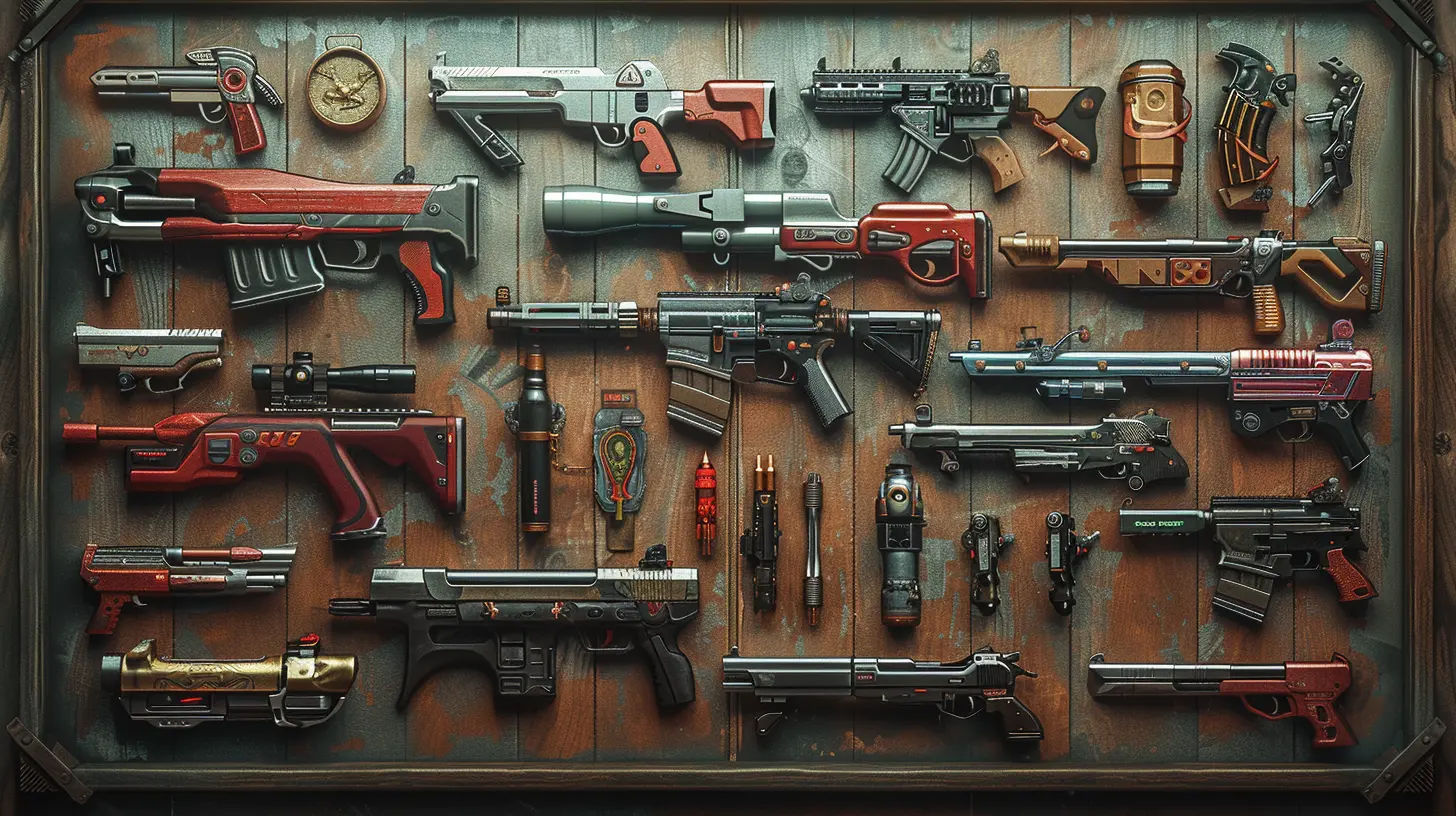
Why Weapon Visuals Matter in Gaming
1. Visuals as a Tool for Immersion
Imagine playing a fantasy RPG, stepping into a world filled with dragons, sorcery, and peril. Now picture wielding a plain, rusty sword. Doesn’t feel right, does it? Weapon visuals serve as a gateway into the game’s universe—they help build the illusion that you’re not just playing a game but living the adventure.A flaming sword might tell you, “This belongs to a legendary hero.” A bio-mechanical rifle covered in neon lights screams, “This is sci-fi action at its finest!” Great visuals make weapons feel like an extension of the world, pulling you in and keeping you engaged.
2. Expressing Your In-Game Personality
Weapon design is like fashion, but for your arsenal. The type of weapon you equip says a lot about who you are as a player. Are you the kind of person who gravitates toward a flashy, oversized hammer because you love making a statement? Or maybe you prefer minimalist daggers because you value stealth and precision.When games offer a variety of weapon designs, they let players embrace their individuality. After all, gaming is a space where we can let our personalities shine, and what better way to do that than through the gear we choose?
3. First Impressions Matter in Loot Systems
Loot-driven games like Destiny 2, Borderlands, or Diablo thrive on the excitement of finding new gear. And let’s face it, when you see an epic weapon drop, you don’t just look at its stats—you first admire how it looks, right? A well-designed weapon ramps up the thrill of discovery, making you feel like you’ve truly found a treasure.Even in games where stats eventually take precedence, the weapon’s appearance often determines whether you’re eager to try it out or stash it away in your inventory. Developers know this, which is why they go all out when designing legendary or rare items.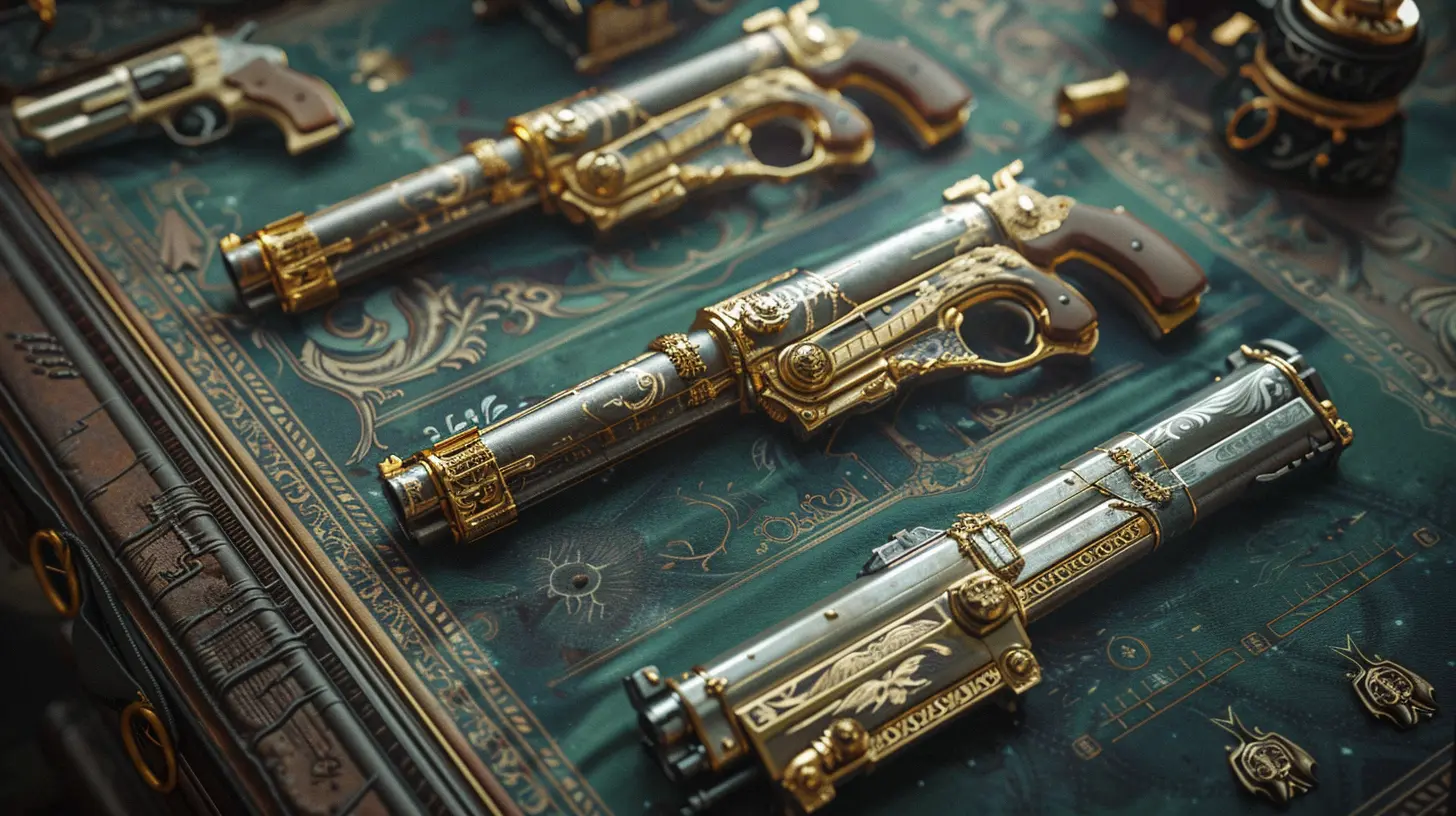
The Impact of Weapon Visuals on Gameplay
4. Enhancing Gameplay Feedback
Weapon visuals do more than look pretty—they can significantly impact how you experience gameplay. Take visual effects, for example. A glowing sword that pulses brighter with every charged attack provides instant feedback on your moves. Meanwhile, a visually underwhelming weapon could leave you feeling detached from the action.Animations also play a big role. A slick reload animation on a futuristic sniper rifle makes every headshot feel satisfying. On the other hand, an unpolished visual design can disrupt the game’s flow and immediately cheapen the experience.
5. Shaping Game Strategy
Believe it or not, weapon visuals can subtly influence how we play. How? Certain designs might make you feel more confident or aggressive. For instance, wielding an intimidating, blood-stained greatsword might push you to rush into combat, while a lightweight, elegant blade could encourage strategic finesse.In some cases, visual cues on weapons inform gameplay mechanics. Maybe your glowing bow changes colors to indicate the type of elemental arrow it’s using. These visual indicators create a seamless connection between the player and the game’s mechanics.
6. Driving Collectibility and Replayability
Weapon visuals are a key ingredient in games with collection mechanics. Players often grind through hours of gameplay just to snag that one ultra-rare weapon with a jaw-dropping design. Think of games like Monster Hunter. The thrill isn’t just about stats—it’s about showing off your weapons during a multiplayer session and having other players go, “Whoa, where did you get that?!”When weapons look stunning, players are more likely to go the extra mile to unlock or craft them. And this drives replayability. Who doesn’t love flexing a weapon that looks like it was forged by the gods themselves?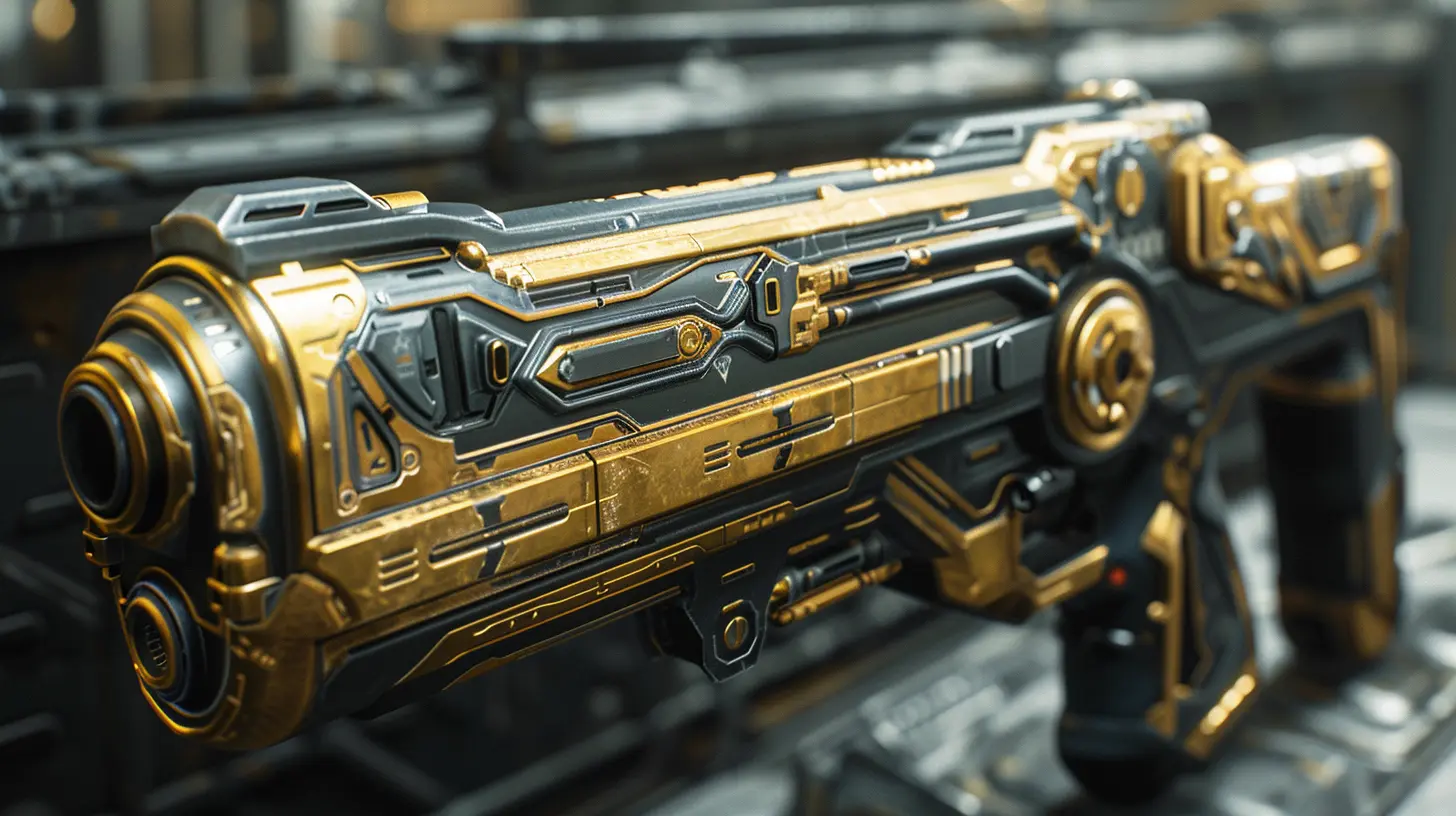
The Psychology Behind Weapon Aesthetics
7. Appealing to Our Sense of Reward
Humans are naturally drawn to things that grab our attention. A well-designed weapon acts almost like a dopamine trigger. It’s inherently satisfying to wield something that looks powerful or beautiful. Developers understand this and use it to make gameplay more rewarding.It’s the same reason why people gravitate toward shiny objects in real life. A glowing sword adorned with intricate patterns is basically the gaming equivalent of a diamond ring—it’s an irresistible symbol of prestige.
8. Creating Emotional Connections
Gaming is all about storytelling. A uniquely designed weapon can feel like a character in its own right. Think about the Buster Sword from Final Fantasy VII or the Master Sword from The Legend of Zelda. These weapons are more than tools—they’re iconic. They come with lore, history, and emotional weight.When you invest hours into a game, your weapon becomes your companion. A good visual design strengthens this bond, making every battle feel personal.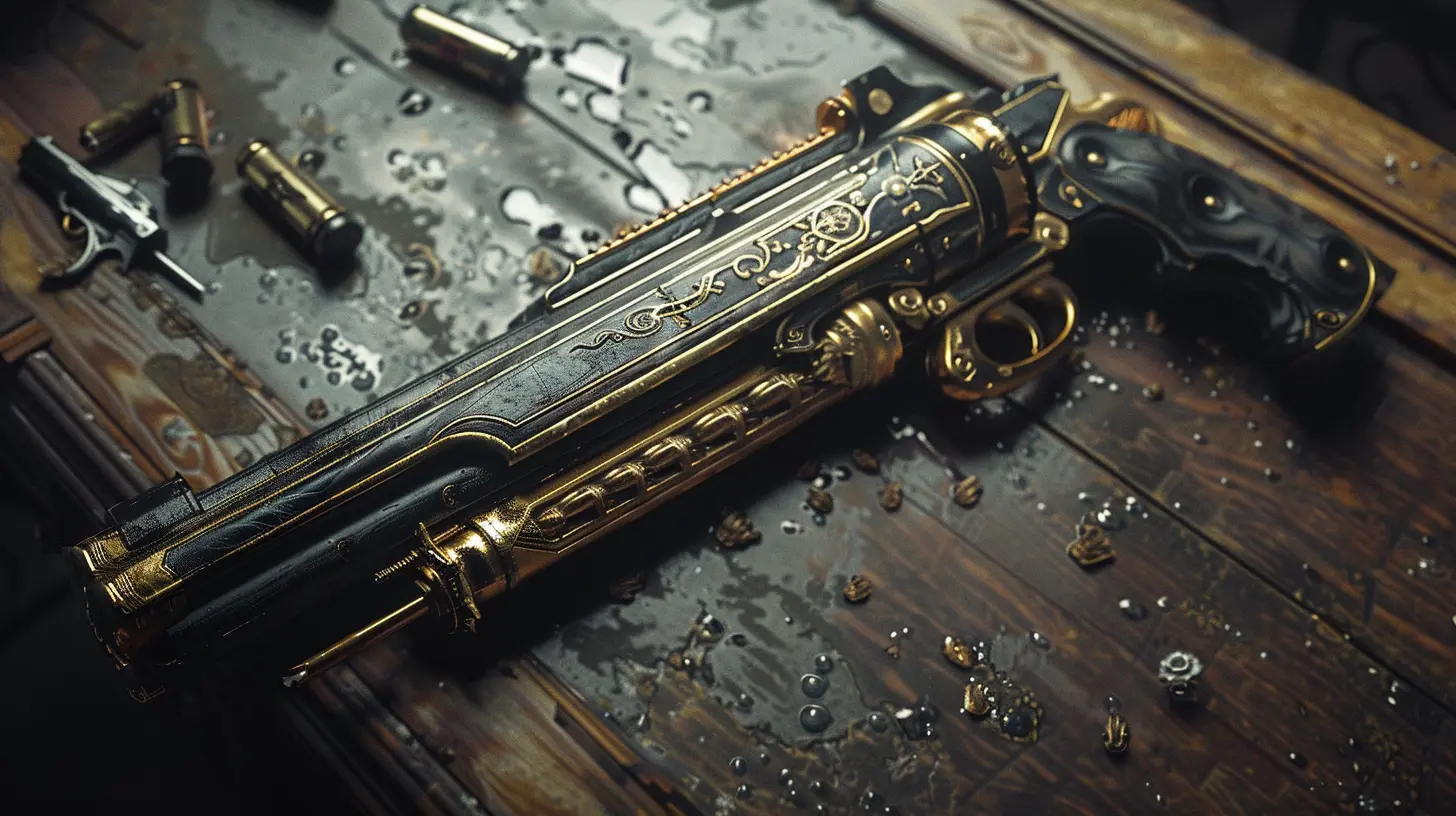
Crafting Memorable Weapon Designs: What Developers Nail
9. Attention to Detail
Great weapon designs aren’t just thrown together; they’re meticulously crafted. Developers consider everything from the silhouette to the texture to ensure it stands out while still fitting into the game world. The tiniest details—like rune engravings, scratches, or glowing cores—can make a massive difference.10. Balancing Functionality and Fantasy
The best weapons strike a sweet spot between looking fantastical and still feeling functional. Sure, that massive ten-foot sword might look cool, but if it seems too impractical to wield, it can break immersion. Developers carefully balance realism with creative flair to make weapons believable and awe-inspiring.Weapon Skins: The Evolution of Weapon Visuals
In today’s gaming landscape, weapon visuals have evolved far beyond their base design. Weapon skins are now a huge part of customization in games like Fortnite, Call of Duty, and Counter-Strike: Global Offensive. These skins allow players to further personalize their arsenal and show off their style.Skins don’t just add variety—they also build communities. Players trade, collect, and even compete for rare skins! It’s proof that weapon visuals have become an integral part of gaming culture.
Final Thoughts: Visuals Are More Than Just Aesthetic
Weapon visuals might seem like just an aesthetic detail, but they’re so much more. They enhance immersion, shape gameplay, and create lasting emotional connections. Whether you’re admiring the sleek curves of an energy rifle or marveling at the intricate engravings on a mythical spear, weapon visuals are what breathe life into your arsenal.So, the next time you’re swapping out weapons in your favorite game, stop and appreciate the artistry. Someone poured their creativity into making that sword, bow, or gun something truly special—and it’s a reminder of how much thought goes into every pixel of our gaming experiences.
all images in this post were generated using AI tools
Category:
Weapon CustomizationAuthor:

Aurora Sharpe
Discussion
rate this article
2 comments
Erin Anderson
Who knew that a shiny sword could spark so much joy? 🎨✨ Adding personality to our weapons is like giving them a stylish makeover. Let’s face it—when your bow looks fabulous, those arrow shots are bound to hit harder! 🏹💥
November 5, 2025 at 4:19 AM

Aurora Sharpe
Absolutely! Personality in weapon design not only enhances aesthetics but also boosts player engagement. A stylish weapon can truly elevate the gaming experience! 🎮✨
Valerie Fields
Great article! I’ve always felt that a weapon’s design can really enhance the gaming experience. It's amazing how visuals can add personality and depth. Can't wait to see how upcoming games incorporate this concept. Keep up the fantastic work!
July 29, 2025 at 4:25 AM

Aurora Sharpe
Thank you for your kind words! I completely agree—weapon design truly adds depth to the gaming experience. Exciting times ahead!
